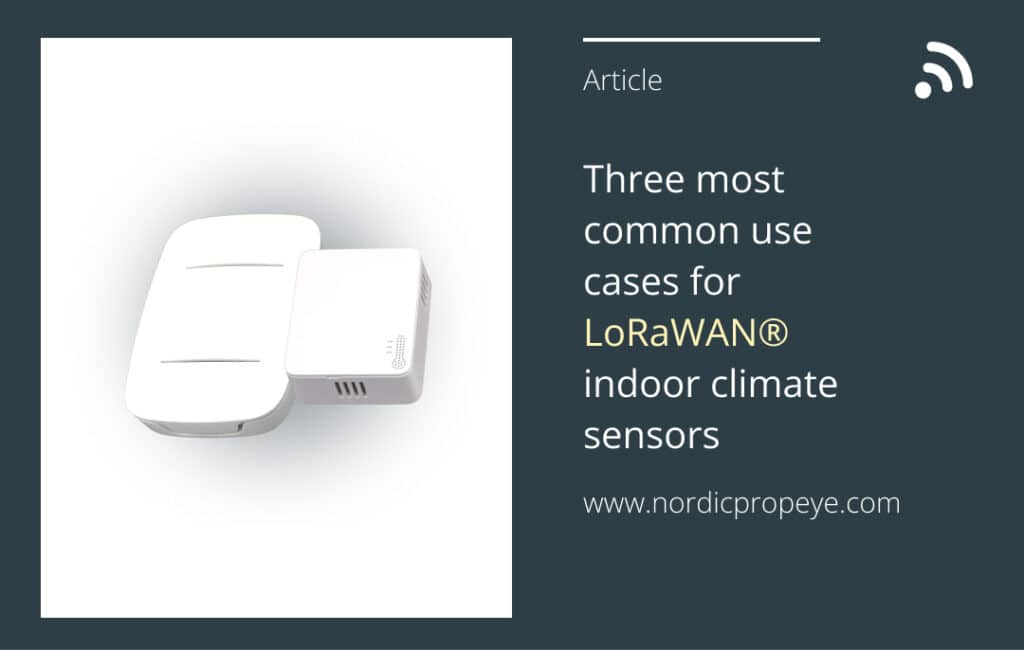Article, November 7th, 2023
This article delves into the three most common use cases for LoRaWAN® indoor climate sensors.
In today’s ever-evolving world of technology, the Internet of Things (IoT) is taking center stage with innovative solutions to address various challenges across industries. LoRaWAN®, a Low Power Wide Area Network technology, is playing a pivotal role in enabling efficient communication between devices, and one of its prominent applications is the use of indoor climate sensors. This article delves into the three most common use cases for LoRaWAN® indoor climate sensors, based on manufacturer Nordic Propeye’s experience of almost a decade of LoRaWAN® development.
1. HVAC Optimization
Heating, Ventilation, and Air Conditioning (HVAC) systems are integral to maintaining a comfortable and healthy indoor environment. However, optimizing these systems for efficiency can be challenging without real-time data. This is where LoRaWAN® indoor climate sensors come into play. By continuously monitoring parameters like temperature, humidity, and carbon dioxide, these sensors provide valuable insights to HVAC systems, allowing them to adjust settings in real-time. As a result, HVAC systems can operate more efficiently, reducing energy consumption and overall operating costs while ensuring optimal comfort for building occupants. When selecting a sensor for this use case, make sure it has a long battery lifetime and frequent reporting intervals. For example, Nordic Propeye’s OY1210 LoRaWAN® CO2 meter provides a minimum of 5 years battery life under the worst possible radio conditions, while measuring every minute.
2. Moisture Damage Prevention
Moisture and humidity control are crucial factors in maintaining the structural integrity and longevity of buildings. Excess moisture can lead to mold growth, and ultimately expensive repairs. Based upon temperature and humidity data, all of this can be prevented by calculating the risk for moisture damages and setting up an alarm notification when threshold levels are exceeded. These sensors can be strategically placed in areas prone to moisture buildup, such as basements, crawl spaces, or bathrooms. Early detection and intervention can save property owners substantial repair costs and prevent health hazards associated with mold growth.
3. Temperature Monitoring
Temperature plays a vital role in both the comfort of occupants and the protection of sensitive equipment. LoRaWAN® indoor climate sensors can monitor and report temperature fluctuations in real-time. This is particularly valuable in environments where temperature control is critical, such as data centers, laboratories, or museums. In the event of a temperature deviation, these sensors can trigger alerts, enabling immediate corrective actions to be taken. Additionally, for industries that require temperature-sensitive storage, such as pharmaceuticals or food, these sensors help ensure compliance with regulatory requirements. One primary example of this is Nordic Propeye’s customer PiteEnergi, who uses the OY1110 LoRaWAN® Temperature and humidity sensors for temperature control of medicine storage (link to Swedish news website).
LoRaWAN® technology has quickly become the de-facto standard for these kind of sensor installations, due to its power efficiency and long range radio capabilities. Embracing these three innovative solutions can lead to a more comfortable, cost-effective, and environmentally friendly living space. Contact us for more information.

